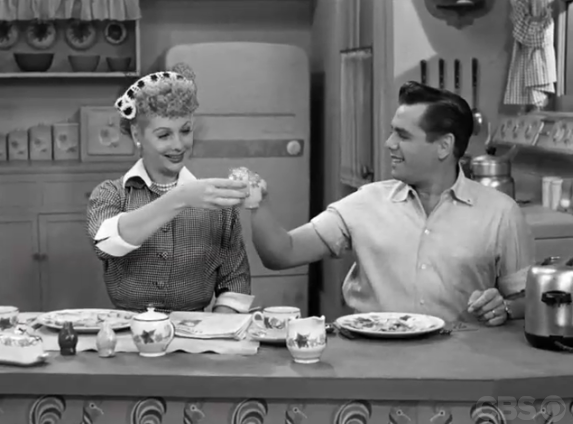"A clumsy, fat, left-handed, stuttering kid". Yes, I remember mentally reviewing that list of knocks I had given myself, while still in grade school. As concise as that list was, you would think that as a grade school "teacher's pet", I could find some concise answers to that list. Clumsy? Work on your coordination and strength. Fat? LOSE WEIG....sorry, lose weight; I tended to hear that solution from others at a loud level. Left-handed? Either have your hand dominance changed for you, or develop ambidexterity. Stuttering (another loud admonition)?? STOP STUTTERING!!

But life needed to go on. Life, food and learning needed nurturing. The food was especially captivating. Fried foods: so good. Fried chicken, fried oysters, hamburgers, roast beef, roast pork, pork chops, shrimp, meat loaf, pizza, and spaghetti were among the more popular proteins. Corn, fried potatoes, mashed potatoes, rice and GRAVY, roasted potatoes, onion and celery, beans, peas, sweet potatoes, tomatoes, peppers, fried okra, lettuce and cucumbers were among the more traditional vegetables. But that omits any details of the snack calories available to me and my siblings: potato chips, cookies, crackers, candy, popcorn, gum, soft drinks (with peanuts poured inside), and fruit. In the final analysis, not that much different than the diet of most 1950's - 1960's kids, aspiring to be middle class. No one held a gun to my head during those years and said, "Eat that NOW", but I more often displayed my hearty gratitude for all that was served. All but spaghetti, because in grade school - I had been told by a sibling that spaghetti had worms in it.
There was garden produce harvested each year from our back yard, but not by me, if I could feign polio or some other low incidence malady. It was the act of growing up and being given a number of 'come to Jesus' talks, about learning how to cook and bake; learning how good it felt to contribute to the meal by picking, "snapping", cooking, serving, eating all those good morsels of vitamins, minerals, fiber and flavorful goodness - often accentuated by being cooked with butter and salt; but that was what was used for cooking at the time. Hindsight bias makes you feel so very smart, but it doesn't give you means to deny your history. "I got better", as the character in a noted "Monty Python" film noted. It took bare subsistence through my college career, and a few good friends who coached me through - when I moved to the Midwest US - selecting and preparing more fresh food. That trend would continue through transition to my non-single life.
I learned to ask for fresh, sustainable, lower-fat, lower-carbohydrate, properly-portioned food for my meals. One popular admonition about one's diet is as follows: Eat food. Not too much. Mostly plants. Thanks to journalist Michael Pollan and others - there were rules for healthy eating I could use.
Would I ever have reached a point where I could imagine being non-single, if I did not confront my fluency disorder? It started in the summer term between junior and senior undergraduate years, when I was enrolled in a general speech class for teacher training. My first speech completed, I was told to have an evaluation at the University speech clinic or - a teacher education track was not in my future. In that summer semester, with my first formal speech therapy program underway (there were no programs for SLP in my Mississippi district, during my school years), I grew up a lot. On a collision course with my growth as a fluent speaker, there were the Watergate hearings. There was my application to graduate school, soon to segue from a master's program in English to one in communicative disorders. And then, there was my trying out for a part in the Ionesco play "The Bald Soprano" as part of my treatment.
In each of these tracks of my impending adulthood, could I ask for what I wanted? We shall see.








